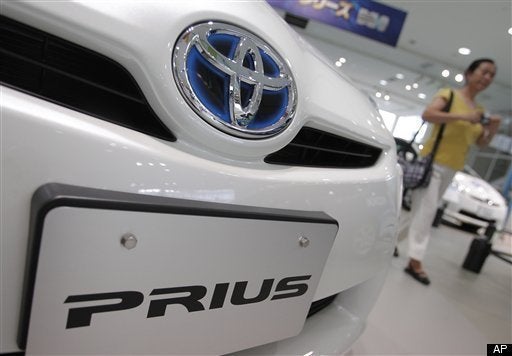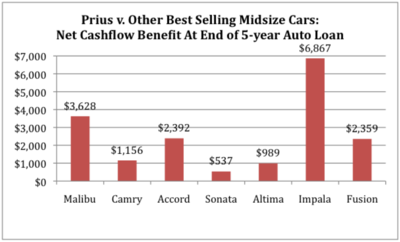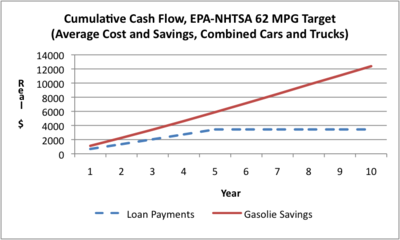
A Decade of Lessons from the 2010 L.A. Auto Show and the California Clean Cars Program
Electric vehicles (EVs) got all the buzz at the L.A. Auto Show -- and rightly so. The Chevy volt won the Green Car of the Year Award, the Nissan Leaf was second, and four of the top five cars being considered for the award were electrics. But, the real news and the important policy lesson to be learned from the L.A. Auto Show is in the scope of activity and competition in the electric vehicle product space. Electric vehicles were such a big draw at this Auto Show because California's clean car standards played a key role in making them possible.
Ten years ago, when California was moving toward a groundbreaking program to institute standards for low emission vehicles (LEV) and zero emission vehicles (ZEV), the automakers insisted that they were impossible and they threatened to leave the state before they would comply. California stuck with the Clean Cars program (with some modifications) and led the nation to both lower emissions of pollutants and higher fuel economy. California will have the opportunity to lead the nation again when the California Air Resources Board (CARB) updates its Clean Cars Program in the spring of next year.
The Dramatic Growth of Activity in the EV Product Space
- There are now or will soon be four different approaches to electric powertrains in the marketplace (hybrid, plug-in, hybrid plug-in, and extended range EVs).
- These powertains will be offered across the full range of vehicles driven by American consumers (compact, mid-size family sedans, large cars, SUVs, Pickups).
- These vehicles will be offered by half a dozen mass market-oriented automakers including Toyota, GM, Nissan, Ford, Honda, Mitsubishi.
- New entrants and niche market-oriented producers like Tesla, Fisher Coda, etc. will create even more competition in the EV product space.
- New EV producers are utilizing several different development models -- internal supply, licensing technologies, and outsourcing components.
This much activity is a sure sign that a great deal of progress has been made in the EV market and, with competition breaking out in a new product space, the current crop of vehicles is only the beginning. Increased competition means that consumers can expect lots of choices and declining prices as these technologies penetrate the market.
Lessons from the Success of the Prius
While the niche players who have received so much attention in the past couple of years play an important role by demonstrating and sometimes licensing new technologies, the future of electric vehicles will be decided by the mass market automakers. In this regard, one cannot talk about the prospects for EVs in the U.S. without mentioning the Prius, which marks its tenth anniversary of U.S. sales with the 2011 model.
When the Prius entered the market a decade ago, it was an expensive statement car, but the goal was always to make it a product aimed at the core of the U.S. market. Our consumer pocketbook analysis shows that it is a very good consumer buy in the family sedan category, where the Environmental Protection Agency (EPA) categorizes it. While the Prius costs about $1,000 more than the other family cars that sold as many units as the Prius in the first quarter of this year, the consumer saves more in gasoline than the increased cost within a year or two. If the Prius or other family car is purchased with a typical five year auto loan at 6 percent, the cost of owning and driving the Prius is lower in the first month. By the time the loan is paid off, the consumer will have saved money, compared to every other alternative.
But the Prius is evolving. Toyota is working on adding plug-in technology to the hybrid power train. The range of the plug-in Prius' pure electric motor would only be 13 miles, which might seem low, but consider the fact that over one quarter of all miles driven on a daily basis occur in trips of ten miles or less. If the EPA rates the plug-in mileage of this Prius the way it has rated the Volt and the Leaf, the plug-in hybrid Prius could be rated at 62 miles per gallon. This means it would achieve the average level for fuel economy standards that the EPA and National Highway Traffic Safety Administration (NHTSA) is considering for 2025.
Compared to the Prius, most of the EVs at the L.A. auto show are expensive and not likely to be very profitable for the automakers in the short term. However, with the current tax credits some, like the Nissan leaf, are competitive with Prius and the other family sedans and this is only the start of the competition for the EV market. If the companies with the muscle to serve the mass market get to scale, by increasing the volume of vehicles produced and sold, their costs will come down. The key, as the success of the Prius shows, is to stick with it, develop the technology and get to scale.
Setting a High Standard is in the Consumer Interest
While the goal of the California Clear Cars program is to reduce pollution and the emission of greenhouse gases, in order to do so autos must burn less gasoline. Analysis by the EPA and NHTSA shows that over the next decade and a half the technologies to raise fuel economy to 62 miles per gallon (or lower emissions of carbon dioxide to 143 grams per mile) can be deployed throughout the fleet. An analysis by the Consumer Federation of America concluded that if California's Clear Cars standard is set at that high level, the cost of driving would be lower and consumers would save a lot of money. The value of the gasoline not used is so much greater than the increase in the cost of the vehicles, that cash flow is positive in the first month, and consumers would save thousands of dollars by the time the auto loan is paid off.
Public opinion polls show that consumers want higher standards to make vehicles get better mileage and pollute less. Polls also show that consumers believe higher standards are good for the nation by reducing oil dependence -- and good for the automakers by helping them become more profitable.
Consumer purchasing patterns indicate that consumers have begun to shift their demand. Improving Clean Car standards would complement these obvious consumer trends and provide market certainty for automakers. Setting a high standard for the next fifteen years is intended to foster and support a long-term perspective for automakers and the public. The standard reduces the marketplace risk of investing in new technologies, giving the automakers time to re-orient their thinking, retool their plants and educate the consumer about the real pocketbook savings that these new technologies offer. The industry typically spends massive amounts on advertising and expends prodigious efforts to influence and educate consumers when they walk into the show room. If CARB adopts a high standard, automakers will have an incentive to direct those efforts toward clearly explaining why higher fuel economy is in the consumer's best interest.
In the most recent election, Californians decisively rejected the effort of the oil and auto companies to gut the Clean Cars program. If CARB chooses to update its Clean Cars program to the highest level being considered by the EPA and NHTSA, it will provide the momentum needed to push the federal government to set the highest standard possible as well.


